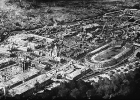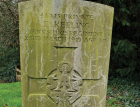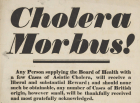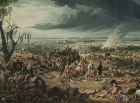Health & Medicine through Time
Attitudes to sickness and health have played a key role across different civilisations and throughout time. The emphasis placed by the ancient societies of Egypt and Greece on the human body are discussed under this theme and the impact those beliefs had on society as it developed. Changes in welfare and hygiene are explored as are attitudes to cleanliness and the eradication of disease. The radical changes to the understanding, experimentation and application of medicine from the nineteenth century to today are an important part of this theme and are explored here.
Sort by:
Date (Newest first) | Title A-Z
Show:
All |
Articles |
Podcasts |
Multipage Articles
-

Coroners, communities, and the Crown: mapping death and justice in late medieval England
ArticleClick to view -

Schools of Vice: how a medical scandal led to the dismantling of Britain’s last prison hulks
ArticleClick to view -

The right to fight: women’s boxing in Britain
ArticleClick to view -

White City: the world’s first Olympic Stadium
ArticleClick to view -

Real Lives: Beatrice Alexander
ArticleClick to view -

Vera Ignatievna Giedroyc: her missions of mercy, 1899–1932
ArticleClick to view -

Real Lives: Anna Wessels Williams (1863–1954)
ArticleClick to view -

Old age care in the time of crisis: London in the sixteenth century
ArticleClick to view -

Out and About in South London
ArticleClick to view -

The death of a hero: Vice-Admiral Horatio Lord Nelson
ArticleClick to view -

Florence Nightingale and epidemics
ArticleClick to view -

Real Lives: Commonwealth War Graves Commission memorial: Edward George Keeling
ArticleClick to view -

The experience of Bilston in the cholera epidemic of 1831–32
ArticleClick to view -

Disease and healthcare on the Isle of Man
ArticleClick to view -

Eyam: the plague village 1665-66
ArticleClick to view -

Glowing in the Dark
ArticleClick to view -

The NHS: Britain’s National Health Service, 1948-2020
ArticleClick to view -

Black Death to global pandemic: London then and now
ArticleClick to view -

Losing sight of the glory: five centuries of combat surgery
ArticleClick to view -

Havelock Hall: the East India Company college gymnasium at Addiscombe
ArticleClick to view

